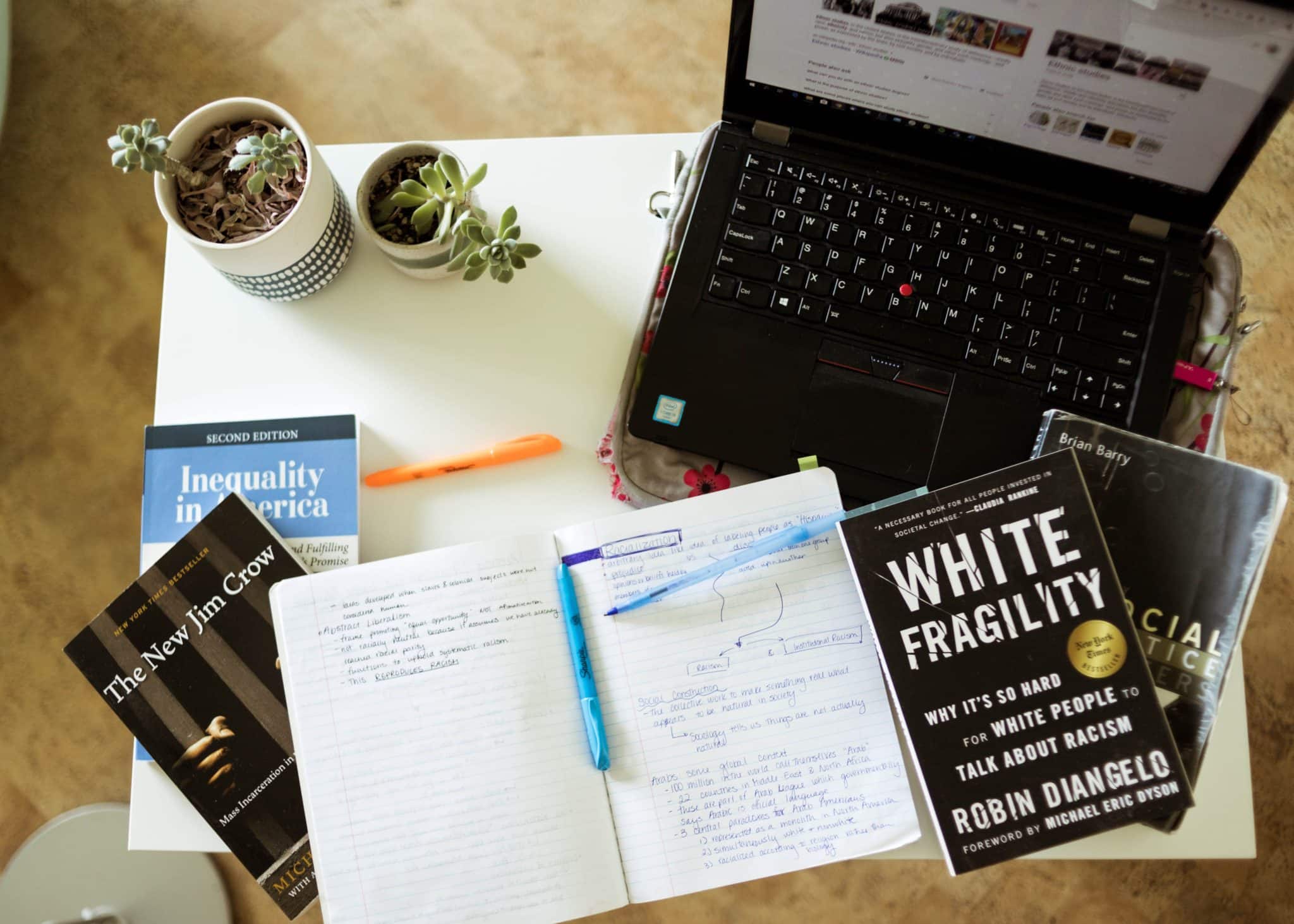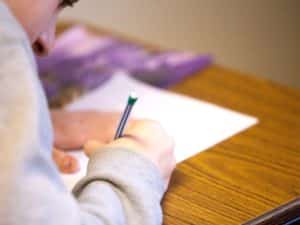Last month, I detailed some actionable tips for guiding you to be more antiracist and inclusive in your overall instruction and classroom, so that is a great place to start if you want to conduct an audit of your overall classroom, curriculum, and teaching approach.
If you are ready to more carefully examine the day-to-day activities and resources you use with your middle or high school history students, then these 10 questions below will help guide you.
It’s important to note that being antiracist and inclusive aren’t statuses achieved, but ones that must be continually worked on. And what it means to teach history is entirely different now than it was when we were in school.
This means we have to unlearn the Euro-centric and often flat, presented-as-fact stories we were taught. Even as an experienced teacher, I am always finding new, lesser-known stories behind famous historical events. Ones that completely change my understanding.
If all this unlearning makes you feel like you need to toss out everything you thought you knew, I am there with you. It is overwhelming to think about. But believe in your decision to continually improve and your commitment to being antiracist, inclusive, and culturally responsive in your teaching.
Every year, I’m editing my lessons to be more accurate and include differing perspectives. And I have to remind myself that while I can’t go back and change how I may have mis-taught something in the past, I can change it for next year. As teachers, we are extra hard on ourselves, looking to be perfect from the start, but that just isn’t possible.
So, use these 10 questions to guide you both in crafting your activities and lectures, and in reexamining what you have already created. Note that some of these questions are intentionally similar because examining your materials from even slightly different angles can cause you to catch something you’d otherwise not notice.
Who or what is the center of the unit, lecture, activity, or source?
Does it focus on the people in power who are making decisions about other people? How can you re-center the lesson to present the event or concept from the perspective of the latter group instead?
For example, just because the 1820s and 30s have been called the Jacksonian Era in the past (and your textbook still might categorize it as such), doesn’t mean you need to present it that way.
Who is the author? What is their perspective or background?
What do you know about that person? This should be asked of any source, whether is it a historical speech, a recent editorial, or your textbook. Asking this allows you to stand behind your selections, preface your lesson with context, and/or be assured you are balancing with alternative perspectives.
What is the counter-view to this perspective or issue or event? Is it missing? How can it be included?
Thinking about the counter-view is implied with the first two questions, but now it’s time to consciously ask yourself, “what is (or what could be) the other side of the story?” Often, it doesn’t even occur to us that there could be one. So simply ask yourself: “if there was a different viewpoint on this, what could it be?” Then go try to find it.
James Loewen, in his famous book Lies My Teacher Told Me, uses the vignette of Helen Keller as a great example of this. Ms. Keller has achieved hero status in America because of her embodiment of hard work and perseverance. Yet he argues how she is so much more multi-dimensional and accomplished than her famous childhood story of learning to communicate. In addition, in her memoir she herself admits she owed her successes in life “partly to the advantages of my birth and environment.” So, in her case, it’s almost like everything that makes her life story really intriguing is missing when we follow the old standby lesson of teaching about her childhood struggles alone, but we don’t even think to question that method.
What or who is being uplifted or celebrated in this activity or source? Does it/do they deserve to be? What isn’t being uplifted or celebrated that needs to be?
Plainly put, who is the hero in this story? And is it the right person?
President Wilson is a great example, as he is often simmered down to an intellectual man, once president of Princeton, and who tried to bring classic American values of democracy and self-determination to the rest of the world during WWI.
But if you were to ask women or Black Americans at the time, they most certainly would disagree that he fought for democracy and self-determination in America. Instead, how can you reallocate some class time to exploring the successes of Alice Paul and the women’s suffrage movement, despite his opposition? How can you share about the segregation and race riots that occurred during his administration, in which he didn’t intervene? These events are arguably no less, if not more, important to America’s 20th century story and squarely tied to WWI, but are often given little coverage. It’s not about simply adding more in, but rather about shifting the focus. And asking students to make their own evaluations.
Is this historically accurate? Is this the complete story? What do non-textbooks say?
Textbooks, in an effort to appease state standards and all the adult stakeholders, strive to be uncontroversial and follow the status quo. There is no getting around that. Not only does that make things terribly boring for students, robbing them of the opportunity to dig into complexities and nuances, but often presents them with descriptions that plainly aren’t totally true.
One famous example is Rosa Parks. Despite an incredible 92-year lifetime, all most people learn about is the iconic tale that starts on the day she was arrested and ends with the desegregation of the Montgomery bus system. Imagine your lesson, though, if you include the details of how death threats and employment blacklisting forced her to move to Detroit, or that a darker-skinned teenager, Claudette Colvin, refused to move from her bus seat nine months earlier, but Black leaders didn’t want her as the face of the protest.
This can be the most overwhelming question of this list, because I know you simply don’t have the time to read a bunch of extra books when you are scrambling to put together lesson plans, but even a quick internet search can reveal some eye-opening backstories.
It’s so important, though, to never stop learning yourself, no matter how busy you are both inside and outside of the classroom. Seek out a few historical books a year to read, if you can. Personally, I like to buy these (used, if possible!) so I can mark and tab them up for quick reference when I am lesson planning for those specific events or topics.
Here are a few great books to start with because they span the breadth of US History: A People’s History of the United States, Stamped from the Beginning, An Indigenous People’s History of the United States, and Lies My Teacher Told Me.
Does this activity or source invite your ELL or special needs students to be active participants?
Carefully examine your lesson and materials to see how they can be made more accessible to your students. There are many strategies to reach diverse learners and which ones you use depends on who your students are each year, but there are a few tried-and-true practices I do because I know they are great for all students.
They include bolding academic words central to understanding the source, creating graphic organizers for notes and worksheets, including time for small group or paired verbal discussions, prompting reflection with sentence stems rather than questions, and having students identify key quotes that summarize the significance of a source.
Does this activity make any assumptions about your students? Does it show preference for experiences and values that may differ from those of your students?
At any point, does the activity require students to have something in order to be successful or fully participate? This could be anything from an aspect about their home life or family, a core value, a wish for the future, or a lived experience like having traveled somewhere or participated in a cultural event.
Family research or interview projects can be heavy in these assumptions, for example, but often assumptions are also woven into everyday questions or comments. Be cognizant any time you are asking students to relate content to their personal life or beliefs.
Also, think about if the activity communicates preference for certain values. This can be hard, because most values are so engrained we don’t even realize they are present. But you may start to see them simply if you challenge yourself to look.
For example, many cultural groups in America value grandparents and extended family living closely together. But very often teachers, school counselors, and school in general sends messages about post-high school plans that imply moving away to college or moving out of one’s home are markers of success. If a student’s values include seeing success as working to take over the family business and later caring for his or her parents, then they many not feel fully seen at school. And for indigenous Americans, the trauma of “going away” to school is still very real.
Does this activity or source touch on a sensitive topic? Does it ask students to simulate these experiences?
Obvious topics are European colonization, slavery, the Trail of Tears, battles, the Holocaust, or any other significantly oppressive, racist, or deadly event. Do your homework by seeking out trainings, lessons by reputable organizations, and colleagues for help and review. These are crucial topics to teach head on and allow students to grapple with, so you want to get it right.
Historical simulations, though, require an extra level of review, even ones on seemingly innocuous topics. Be watchful even of individual questions that start with stems like “Imagine you are a…”
As history teachers, we try so hard to make the abstract past feel real that simulations seem to be a great choice. However, for many reasons they can be problematic in trivializing or misrepresenting the actual events. Here are great articles by Teaching For Tolerance, the Anti-Defamation League, and Cult of Pedagogy that explain these issues more deeply.
Does this activity ask students to share a personal experience that could be traumatic or sensitive to them?
Personal connection is the basis for making new knowledge stick, so we absolutely want to make those parallels with content. However, just like with simulations, be mindful of how these questions are worded or tasks are set up.
Does the activity have students share to the class or each other about a personal connection to the material? If so, is there a way students could share their thinking in writing or otherwise more privately? Do students have an option of providing a connection to another historical event instead of about themselves? Can the question be turned around so that it doesn’t exclude a student with an experience they’d rather not share?
A cliché but still powerful example of a question swap that opened my eyes when I first heard it, is instead of asking students about their favorite thing they did over break, ask instead what they are most looking forward to now they are back at school. Any number of things could cause any student to dread that first question. This is not to say you should avoid building relationships with your students, but that you want to be mindful of how two similar questions could have very different effects.
Do I assess my students in a way that allows their perspective to be correct? Do they feel safe to express their perspective?
Part of what we as history teachers love about our subject is there is often no right answer. Yet, on test day we may not be encouraging students to arrive at their own conclusions and express their unique perspectives. Or we don’t provide an opportunity for a variety of format options that could include verbal expression, extended reflection, or revision.
Check to see if you can open up how you assess your students to be more inclusive of their personalized conclusions about the content.
I am constantly reading, learning, revising in efforts to be as antiracist, inclusive, equitable, and empowering for my students and strive to help you do the same. Please feel free to reach out to me if you have any suggestions, comments, or want to chat. I hope these questions can serve as a checklist for you to improve your teaching.
You may find this other blog post, How to be an Antiracist History Teacher, useful as well.
Feature image credit: Annika Gordon





